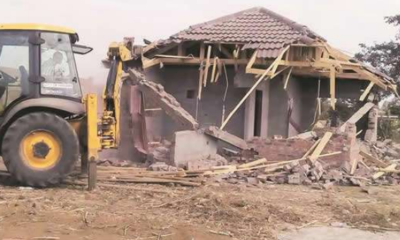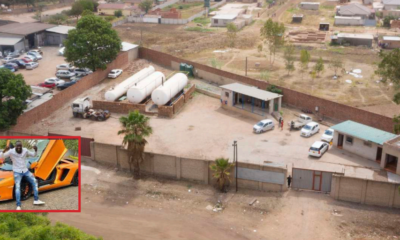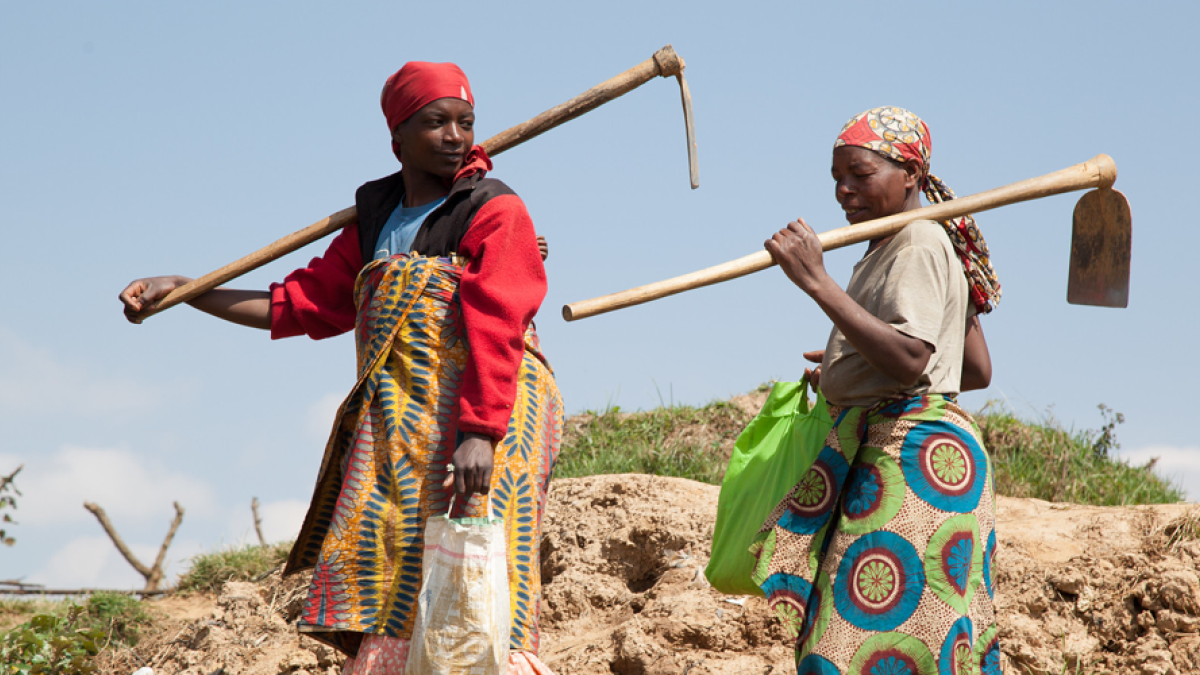
Opinion
Formalisation of customary land rights and implications for women
Published
1 year agoon
By
NewsHawksThis is an abridged version of a presentation made by Dr Phillan Zamchiya, a senior researcher at the Institute for Poverty, Land and Agrarian Studies at the University of the Western Cape to a regional land policy brief on 29 March in Johannesburg. The conference was attended by delegates from South Africa, Mozambique, Zambia and Zimbabwe.
This research is an outcome of a project conceived in 2020 to investigate how and why the formalisation of customary land rights is affecting tenure security for women living in rural areas in Mozambique, Zimbabwe, South Africa and Zambia and the relational implications for policymakers.
Dr Phillan Zamchiya
MOST countries including in the Global North are struggling with how to reform tenure to improve land tenure security for all —especially women — and deepen democracy.
A number of global instruments have been put in place to secure women’s land rights.
However, in sub-Saharan Africa and in the Global South one of the most dramatic developments is the rapid drive towards formalisation of property rights in land through surveying of boundaries, registration and documentation of customary land rights as a way to improve tenure security.
This proposition is embedded in the gender-blind Evolutionary Theories of Land Rights (ETLR) whose central overt and covert logic is a drive towards Western forms of individualised private property.
This can be conceptualised as evolutionary development and is mainly supported by some free market economists and African feminist lawyers.
To signify this trend, between 1990 and 2018 there were 33 new land laws enacted across sub-Saharan Africa, much of them with a focus on formalising property rights in land under customary tenure.
Aspiration six of the African Union Agenda 2063 also stipulates that 90% of rural women must have access to productive assets, including land, by 2025 which remains pie in the sky.
The 2015 African Union’s Special Technical Committee on Agriculture, Water and Environment recommendation requires states to allocate at least 30% of land to women by 2025.
Formalisation will enable women to:
· Own property in their own names (Deininger et al 2008);
· Co-own family and common property resources (see Amanor 2012);
· Bequeath land as inheritance (see Amanor 2012); and
· Borrow money from banks and invest (Ji et al., 2021);
Formalisation will also lead to:
· Transfer of land to “efficient” farm users (Cao et al 2022; Yan and Huo, 2016, Wang et al., 2018);
· Replacement of patriarchal customary land governance systems;
· The deepening of democracy (Atuahene 2005); and
· Reduction of land conflicts and violence against women (Mekonen et al 2020; Bessa and Malasha 2020, )
Women in particular are expected to benefit remarkably from formalisation, in a context where customary norms are backward and not gender-neutral (Terra Firma 2013; Cabral and Norfolk 2016:22).
As Celine Salcedo-La Viña (2020) argues, land titles are often used as a proxy for women’s land tenure security.
Formalisation is taking different formats across the four studied countries.
The first is “formalisation from above” by legally mandated state institutions in Mozambique where the 1997 Land Law provides mechanisms through which individuals, communities, and investors could register land-use rights, including a Direito de Uso e Aproveitamento da Terra (Duat), which comprises a right to use and benefit from land that may be held individually or jointly.
This is being driven by the state and is massively funded by Western donors and the World Bank in particular which has donated US$100 million in 2018 to regularise 2 million Duats (World Bank Group 2018). The programme targets 40% of beneficiaries to be women (WBG 2018).
Zambia has two broad processes of formalisation of property rights in land, for people who live under customary tenure.
The first is an official process enshrined in section 8 of the 1995 Lands Act (Republic of Zambia 1995) that provides for the conversion of customary land to state land through leasehold titles not exceeding 99 years.
The second, which is a focus of this study, is neither recognised by the 1995 Lands Act nor the Zambia National Lands Policy (Republic of Zambia 2021). It involves the surveying of boundaries, registration and issuance of doc- uments called customary landholding certificates to individuals by the traditional leaders working with civil society organisations (CSOs) and Western donors.
The third involves the conversion of customary land to state land for the government’s various rural development projects in Zimbabwe sustained by a resurgent “modernisation” belief of the 1950s in the post-Robert Mugabe era.
The fourth dimension is exemplified by South Africa where there is an increase in urban domestic elites acquiring huge tracts of customary land in alliance with traditional leaders, especially for residential purposes.
Formalisation takes different dimensions in different countries depending on local circumstances and the different interests of stakeholders.
However, the formalisation programmes seem to be largely embedded in Western evolutionary models of land tenure rightsthat draw from a narrow construction of legality, which presumes that individual ownership is ultimately inevitable for all social contexts.
The resurgent modernist school of thoughtwhose central logic is that “the African relationship to the land, African authority and African society” are “backward”, “traditional”, and unready for the strict discipline and rationality of modern rural development predicated on state merit.
Across the four countries, decision making and authority over customary land is largely vested in the executive (responsible minister and president), rural district councils and customary authorities rather than in women and men who are the real land rights holders and users.
This stems from distorted versions of African customary law as part of the apartheid and colonial legacy.
A declaration by the government in any of the four countries automatically renders the land the private property of the state.
The Southern African states are reluctant to domesticate the international principle of free, prior and informed consent (FPIC).
FPIC is an international principle that gives people the right to say yes or no to developmental projects, therefore upholding the universal right to self-determination (Food and Agriculture Organisation 2014, p.12).
FPIC at a policy implementation level entails that the rights-holders-men and women- must make decisions free from undue influence, coercion, bribe and fear (Franco 2014).
Some women have lower tenure security and are least beneficiaries in the tenure reforms.
· Single women are expected to leave the family land once they are married, and tend to be considered “transient” in rural cultures;
· A Divorcee is expected to leave her husband’s land and return to the family land from which she came;
· Young women in general remained excluded as only 8.45% of our respondents who acquired land in the past five years were aged between 18 and 35 years;
· Married women. Even when a married woman’s name is on the land certificate it does not always transform gendered power relations over who controls the land;
· Single women with children (not divorcees) tend to have better access to land. It seems customary law is adapting to the high number of women who do not want to get married:
· Most widows no longer face immediate eviction after the death of husband but are conditioned to patriarchal norms, like they cannot remarry and they have to be indoors by sunset and are not allowed to wave at men;
· Old women have more bargaining power and decision making power over land which is acquired over time after fulfilling some constructed social reproduction roles such as having children.
Formally educated womenwith access to information, strong social and political networks, and good financial income are in a better position to benefit from reforms and enforce their rights unlike the poor and vulnerable.
Ignoring some of the differentiated gender experiences leads to simplified land policies in all countries, obscures analysis of the impact of formalisation and exacerbate the vulnerabilities of those affected, rather than help them.
In all four countries, formalisation is accelerating the commodification of customary land, leading to the rise of informal “land markets”.
This is despite the fact that land laws in all four countries do not permit the selling of customary land.
The processes of commodification are starker in our study sites in South Africa where over three quarters (75.25%) of our respondents who ac- quired residential plots or arable land in the past ten years paid for it in cash to the traditional authority or individuals.
This is followed by Zimbabwe where 59% of our respondents had bought land in the past five years.
In our study sites in Mozambique and Zambia informal land markets are also established.
Traditional leaders are primarily the ones selling land in South Africa, Zambia, and Zimbabwe outside the law, while in Mozambique it is mainly individuals and domestic elites.
Land prices are also increasing, to the disadvantage of many vulnerable women. Some urban elites, salaried local workers, migrants, and the local big shots – mainly men – acquire land in corrupt exchanges for speculative and not production purposes.
In many cases, the poor women could not afford the costs involved, putting land rights beyond the reach of many, especially in a region where close to 88 million people (translating to 45.5% of the population in rural areas) live in extreme poverty with the highest number being among the female-headed households.
The emerging new land rights property system is becoming a mechanism to redistribute land from the poor to the rich and from farmers to speculators.
This is resulting in a new land question of elite concentration in southern Africa.
The privatisation of customary land shows that there is an evident shift in decision-making power from families and communities to the state officials , private consultants, traditional leaders and local big ‘men’ sometimes connected to the ruling parties who challenge the authority of the traditional ‘rural big men’.
Emerging is a hybrid of traditional, elected and appointed institutions to govern customary land whose nature and characteristics we still need to fully understand.
The research found no evidence of certificates or customary land and houses being used to apply for loans from commercial banks.
The land laws in Mozambique, Zimbabwe and Zambia do not provide for the use of customary land as collateral.
However, all the managers of the commercial banks we surveyed for this research said their institutions only recognise state-issued leaseholds or title deeds as proof of land ownership.
On average only 2.5% of respondents across the four countries had acquired loans using either customary land or the certificate as some form of collateral. The distribution is as follows: South Africa (4.3%); Zimbabwe (4%); Zambia 1.7% and Mozambique (0%).
The sources of the loans were family, micro-financial institutions. , friends, church and not the conventional commercial banks.
The data show that the acquisition of a certificate (Mozambique and Zambia) and individualization of property rights (in South Africa and Zimbabwe) was not, on its own, sufficient to make people feel secure enough to invest.
Rather, the majority of respondents ( 51.1 %) said that they were continuing to invest on the land as a way of legitimating their stay and ensuring security of tenure.
This is as follows: Mozambique(34.1%); South Africa (49.7%); Zambia (60.7%) and Zimbabwe (76%)
Thus, although insecurity of tenure is a disincentive to invest, it is paradoxically often also an incentive from our study, because people feel investment will itself increase security.
The research found no evidence directly linking agricultural productivity to the acquisition of certificates (Mozambique and Zambia). The dominant story was that the certification programme could not be linked to increased production. As a respondent, explained:
The certificate will only help me to reduce conflicts over boundaries. It cannot help me to have [a] bumper harvest. But state-subsidised fertiliser will help me to have a bumper harvest. If government can also help us with markets because some traders short-change us …
To many women, what mattered most to productivity, was linking tenure reform to large-scale state programs that support agricultural productivity.
Across our study sites, almost one in every three households (30.3%) said that conflicts have increased in the past 10 years revealing deepening social and gendered divisions.
There are intensifying conflicts over land across the region, revealing deepening social and gendered divisions.
Almost one in every three households (30.3%) said that land conflicts have increased over the past 10 years. The distribution within countries is as follows: Zimbabwe (59%), South Africa (49.8%), Zambia (10%) and Mozambique (2.3%).
The most prevalent of these conflicts relate to: (a) double allocations of the same parcel through corrupt practices; (b) access to common property resources (c) boundary conflicts; (d) inheritance conflicts; (e) divorce disputes; (f) disputes with new settlers and returnees; (g) eviction by the state and private investors, and (h) gender-based conflicts.
Across our study sites, 27.5% of respondents feel insecure on their land and fear that they may lose their land in the next five years.
The distribution of respondents who fear losing their land to government per country is as follows: Zimbabwe (84%), Mozambique (58.3%), South Africa (20%), and Zambia (20%).
The distribution of respondents per country who fear losing their land to private investors is as follows: Zambia (53.3%), South Africa (40%), Mozambique (16.7%), and Zimbabwe (10%).
Owing to the existential threats, most households said that common property resources such as (a) forest land, (b) rangelands, (c) community grave sites, and (d) rivers are the most insecure and the most likely to be grabbed by government and private investors.
Most African tenure systems include a set of rights namely (1) individual/family rights for residential sites (2) arable lands or cropping land and (3) collectively held rights for common property resources like forest and grazing land.
An individualisation approach does not work with rural common property resources which are never an exclusive right to one person, and which have fluid boundaries and flexible rules.
Access to land and natural resources is based on membership and affiliation to different social groups and it becomes difficult to register such ever changing affiliations.
Land tenure represents a set of mobile social relations valid for a point in time. They are not static. It is living customary law. The challenge is to capture a moving target, a set of mobile social relations.
Customary land rights are often multiple (a bundle of land rights), nested, shared (even with seasonal users) and overlapping in character and therefore difficult to individualise and record.
The processes can make customary tenure more legible and available on the open markets (which are not gender neutral) dominated by wealthier big private companies, more educated and more powerful women and men with social and political networks at the expense of the poor households with traditional elites selling land.
This can lead to market-driven displacements of the poor and vulnerable.
Formalisation has also proven not to be a magic bullet to unlock lending to the poor by commercial banks. Commercial banks do not lend to the poor because of the high risk of not repaying the loan, the low value of their household assets, and high transaction costs. Families earning less than around US$2 400 per month are unlikely to get access to formal credit using land or housing as collateral, whether or not they hold state leaseholds/title deeds/DUATS or rural certificates to their homes and land.
Even if the government was to make it legally mandatory or persuade the commercial banks to lend to the poor using their land, houses or assets as collateral, failure to repay the loans would result in possession of their homes leaving them landless and homeless. They have other informal networks where they borrow as we have seen.
Technically fixing land governance without agrarian support is not likely going to lead to increased productivity, investments, economic development and poverty reduction. In fact, there is a danger to institutionalise gendered inequalities.
Formalisation can cause conflict such as GBV through introducing simplified and alien categories such as the ‘owner’ which tend to contradict local custom and to exclude the husband and other family and community land users (Ayano 2018).
Documentation of land rights has also helped to enhance the territorial interests of the state and traditional authorities to govern, control people and consolidate authoritarian power (Boone 2007, Chinigò 2015, Scott 1998).
Registered title deeds creates unaffordable costs for many poor people. They have to pay rates and most end up losing their land.
The associated land registers are a recurrent cost and difficult to maintain to an extent that they lose track over time and fail to reflect the contemporary accurate record of changing local land relations (Cousins 2021).
Titling is probably useful to elite and middle-income men and women who can afford financial leverage, risk and real estate markets.
For the poor, whose concerns are more about day-to-day survival, direct access to livelihood and keeping costs down it may provoke their further descent into poverty. (Kingwill et al 2006, 7).
To be continued
Dr Phillan Zamchiya officially is a senior researcher at the Institute for Poverty, Land and Agrarian Studies (PLAAS) at the University of the Western Cape since 2017. He holds a Doctor of Philosophy (DPhil) in International Development from the University of Oxford. His academic interests are twofold. He studies contemporary trajectories of land and agrarian change in Southern Africa and the politics of post-colonial states in democratic transitions. He is currently the regional coordinator of PLAAS’s new project on the privatisation of customary land and women’s land rights in Zimbabwe, Mozambique, South Africa and Zambia.
You may like
-


From breaking the glass ceiling to being the shattered glass
-
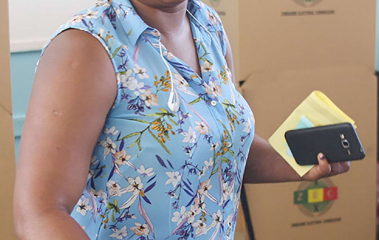

Lack of IDs disenfranchises women
-
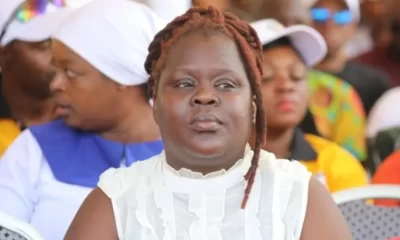

Equality remains an illusion to women
-
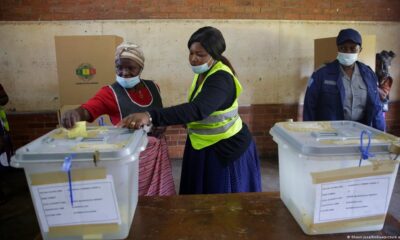

Women’s participation in politics declines, but the fight rages on
-
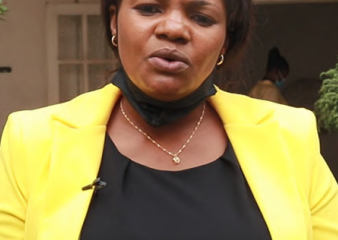

Women thrive to progress their leadership aspirations
-


Women’s participation in elections declines — ERC

